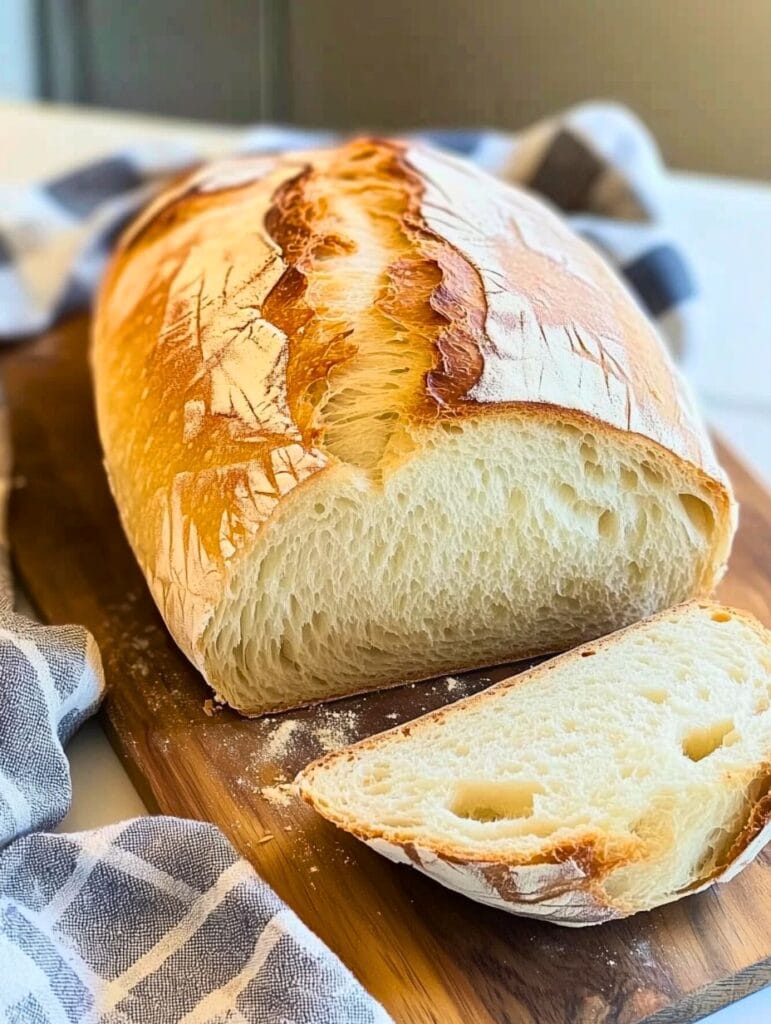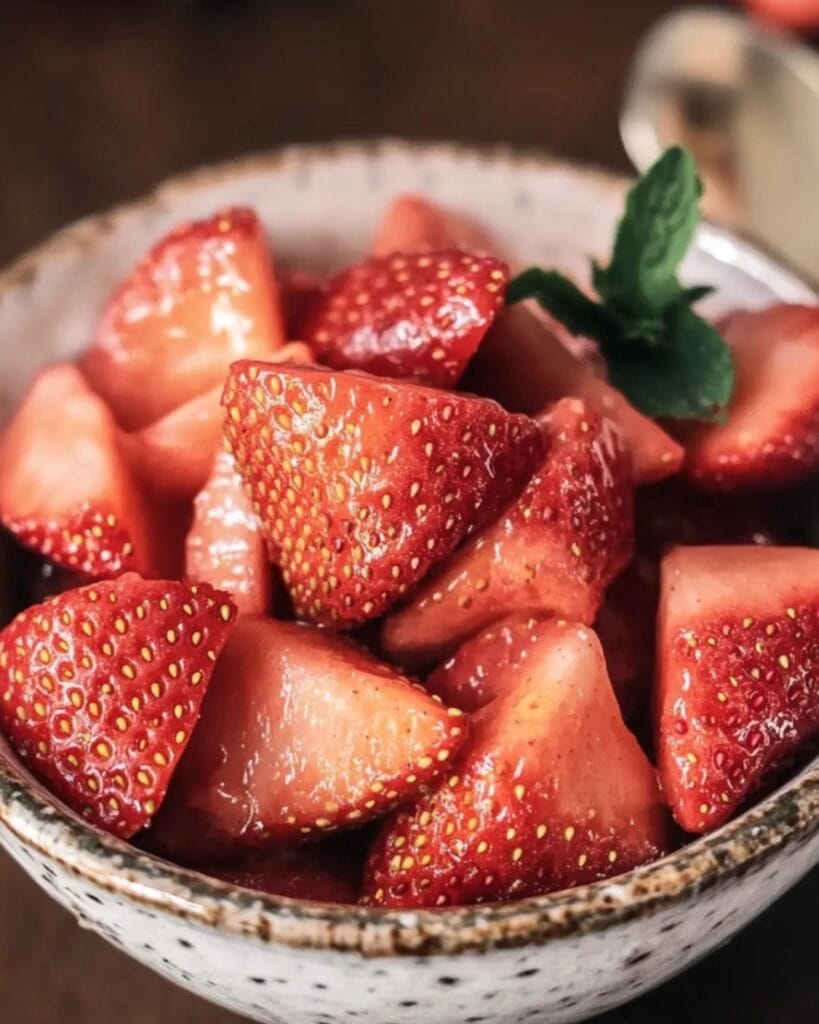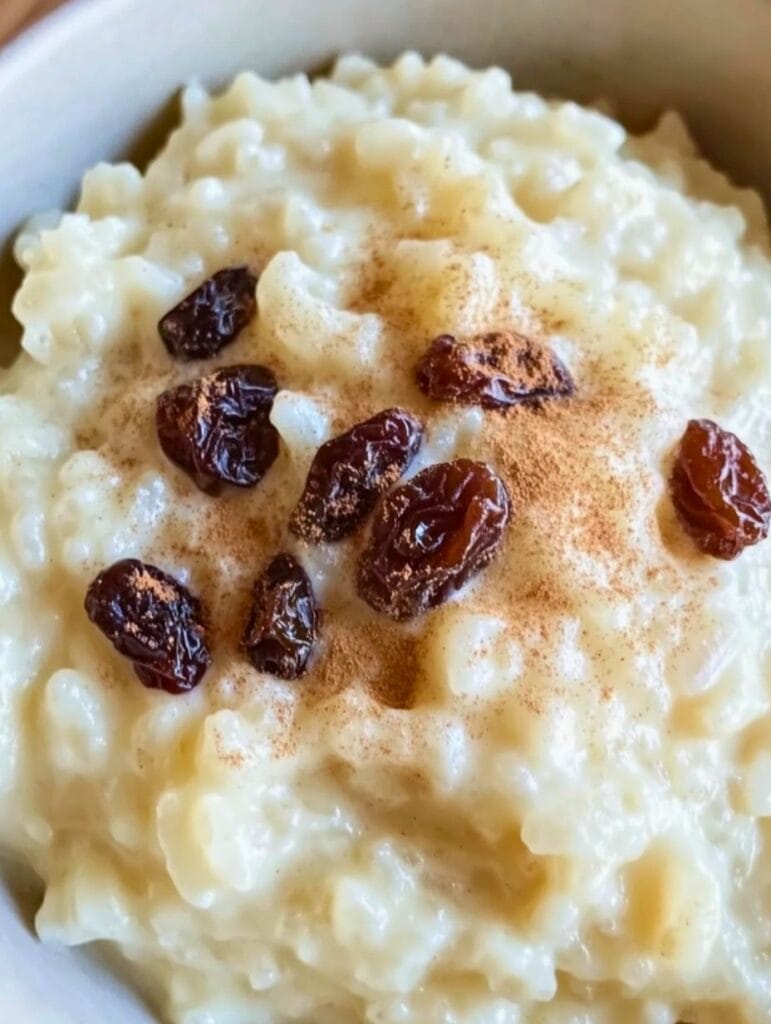If you’ve ever wanted to make fresh, homemade white bread from scratch, this easy recipe is perfect for you! It’s soft, fluffy, and has a lightly golden crust, making it ideal for sandwiches, toast, or simply slathering with butter.

Cuisine: American
Prep Time: 20 minutes
Cooking Time: 40 minutes
Total Time: 1 hour
Servings: 1 loaf or 12 dinner rolls
Why You’ll Love Making It
- Beginner-Friendly: No prior baking experience needed! The simple ingredients and step-by-step guidance make this foolproof.
- Quick & Easy: Traditional bread recipes can take hours—this one is ready in 90 minutes from start to finish.
- Soft, Fluffy Texture: The perfect balance of moisture, structure, and flavor creates bakery-quality results at home.
- Customizable: Make it as a large loaf for slicing or shape it into 12 rolls for serving with meals.
- Minimal Equipment: No fancy tools required—just a bowl, a spoon, and an oven!
Ingredients
- 1 ½ cups warm water (105–115°F) – Activates the yeast; warm enough to help it bloom but not too hot to kill it.
- 1 Tbsp honey – Adds a slight sweetness and helps feed the yeast for a better rise.
- 2 ¼ tsp active dry yeast (1 packet) – The key ingredient that makes the bread rise and gives it a soft, airy texture.
- 2 Tbsp coconut oil, melted – Keeps the bread soft and moist. You can substitute melted butter or vegetable oil if preferred.
- 4 cups all-purpose flour – Provides the structure of the bread. Use bread flour for a chewier texture.
- 1 ½ tsp salt – Enhances the flavor of the bread.
- 4 Tbsp vital wheat gluten (optional, 1 Tbsp per cup of flour) – Improves elasticity and structure, making the bread softer and chewier.
Instructions
Step 1: Activate the Yeast
In a large mixing bowl, combine warm water, honey, and yeast. Stir gently until dissolved. Let sit for 5–10 minutes until the mixture becomes foamy. If there is no foam, your yeast may be expired, and you’ll need to start over with fresh yeast.
Step 2: Mix the Dough
Add the melted coconut oil, flour, and salt to the yeast mixture. If using a stand mixer with a dough hook, knead for 10 minutes on low speed until the dough is smooth and elastic. If kneading by hand, turn the dough onto a lightly floured surface and knead for about 12 minutes until it’s soft but not sticky.
Step 3: First Rise (30 Minutes)
Form the dough into a ball and place it back into the mixing bowl. Cover with a clean kitchen towel. Let it rise in a warm place for 30 minutes, or until doubled in size.
Step 4: Shape the Dough
Lightly flour a surface and place the dough on it. Knead a few times to remove excess air bubbles, then shape it into a loaf or divide into 12 equal pieces for rolls. Cover with a towel and let it rest while you preheat the oven.
Step 5: Preheat the Oven to 400°F
If using a pizza stone or cast iron skillet, place it in the oven while it preheats.
Step 6: Second Rise (30 Minutes)
Place the shaped dough on a parchment-lined baking sheet or in a greased loaf pan. Cover and let rise for another 30 minutes, until slightly puffy.
Step 7: Bake the Bread
If using a pizza stone, place the dough directly on it. Using a sharp knife or razor blade, make two shallow slits on top to allow even expansion. Bake for 25 minutes at 400°F until golden brown. If using a loaf pan or cast iron skillet, increase the bake time by 10–15 minutes. The bread is done when the internal temperature reaches 200–210°F or it sounds hollow when tapped on the bottom.
Step 8: Cool & Enjoy
Transfer the bread to a wire rack and let cool for at least 15 minutes before slicing. Serve warm with butter, use it for sandwiches, or toast it for breakfast.
FAQs
Can I make this bread without a stand mixer?
Yes! Simply knead the dough by hand for about 12–15 minutes until it becomes smooth and elastic. It will take a little more effort, but the results will be just as good!
Can I use whole wheat flour instead of all-purpose flour?
You can replace up to 50% of the all-purpose flour with whole wheat flour. However, using only whole wheat flour may result in a denser loaf, so adding 1–2 extra tablespoons of water may help maintain moisture.

 Aliquam in sagittis nulla. Curabitur euismod diam eget risus venenatis, sed dictum lectus bibendum. Nunc nunc nisi, hendrerit eget nisi id, rhoncus rutrum velit. Nunc vel mauris dolor. Class aptent taciti sociosqu ad litora torquent per conubia nostra, per inceptos himenaeos. Aliquam fringilla quis nisi eget imperdiet.
Aliquam in sagittis nulla. Curabitur euismod diam eget risus venenatis, sed dictum lectus bibendum. Nunc nunc nisi, hendrerit eget nisi id, rhoncus rutrum velit. Nunc vel mauris dolor. Class aptent taciti sociosqu ad litora torquent per conubia nostra, per inceptos himenaeos. Aliquam fringilla quis nisi eget imperdiet.



